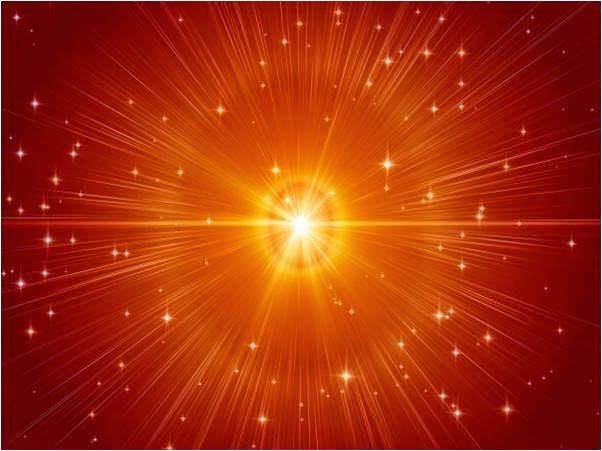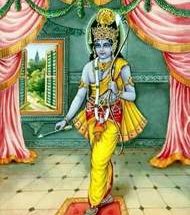How to worship Nirgun Brahm in Hinduism

In Saugna( God’s form with virtues) we do worship with 16 articles, which is knows as Shodashopachar pooja. However for Advait philosophy followers, there is often a big query ,” If we think of God as formless, how should we worship him? ” The merits of manasik pooja has been extolled by great saints since ages and Adi Guru Shankaracharya provides perfect answers to the query of one of his disciples , and thus showing us path how we can progress on the path of Nirguna Worship. His this work is known as Aadi Shankarya Krit ‘Nirguna Manasa Pooja’ and is a gem of religious text in the our Sanatana dharma culture. I bow down to his greatness , for he has provided answer to a very important query on Nirguna worship. The work is very Powerful and gives clear way to live with the thought.
Nirgun Means Existence of Nirgun Brahm (Formless Supreme Entity ) leads to conclusion that there is no previous birth and no next birth. Thus the Law of Karma, Pooja, Devotion are not applicable, therefore one should do his work without greed and remain focused on his work and society. Adi Sankaracharya’s work “Nirguna Manasa Puja” is the base of thoughts of Nirguna. Adi Shankaracharya wrote this as Questions and Answer about Formless Supreme Entity.
The work of Adi Shankaracharya is as follows :-
The Shishya Asked to Guru (Aadi Sankaracharya is Shishya and he himself is Guru): How to worship that indivisible Satchidananda, who is unconditioned and of non-dual State. prescribed. Where to prayer, where to keep all (Asan, Pushpan, Kalasham), how to wash his feet, how to offer water and how to do Achaman for him who is indivisible? How to give bath to him, how to Clothing, how to give sacred thread to him, as he is castless and having no family tree? How tooffer Sandal Past, how to give flower to him? what is the Ornaments for that formless? How to give Dhup, Light (Deep), Holy food (Naivedyan) to him, who is just him? How to offer betel for the Rejoicer of the universe? how is there for Him the light- waving ceremony (nirajana) What circumambulation (pradakshina) for the Infinite? What prostration (pranama) for the non-dual Reality? For Him who is unknowable by the words of the Vedas, what praise (stotra) is prescribed? How is there the ceremony of dismissal (udavasana) for Him who is established inside and outside?
The Adi Shankaraya Replied.:
I worship the symbol of the Self, who is shining like a jewel and situated in the heart-lotus within the city of illusion and ego, with the crown of the unsullied mind from the river of faith, always, with the flowers of Supreme Meditation, for the sake of non-rebirth.. `I am the One, the Ultimate’. Thus one should invoke Lord Siva, the Swyambhoo.
Then one should prepare the seat (asana) , that is thinking of the self-established Self..
`I have no contact with the dust of virtue and sin.’ Thus should the wise one offer washing of the feet (padya), that is such knowledge destroying all sins.
One should pour forth that handful of water which is the root- ignorance held from time without beginning. This is verily the water- offering (arghya) of the symbol of the Self.
Indra and other beings drink only the tiny fraction of a drop from the waves of the bliss ocean of Brahman.’ That meditation is considered as the Achamana.
All the worlds are bathed verily by the water of Brahma’s bliss which is indivisible.’ That meditation is the ablution (abhishechana) of the Self.
I am the light of Consciousness without any veil’. This thinking is the holy cloth (sad vastram) of the symbol of the Self. Thus should think the wise one.
I am the thread of the garland of all the worlds which are in the nature of the three Gunas (Tamasik, Satwik and Rajsik are three gunas). This conviction is verily considered here as the highest sacred thread.
`This manifold world mingled with numerous impressions is supported by me, and by no other’. This meditation is the sandal paste of the Self.
With the sesamum-flowers in the form of renunciation of the activity of sattva, rajas, and tamas, one should always worship the symbol of the Self, for attaining liberation while living.

With the non-dual Bel leaves devoid of the triple distinction between the Lord, the guru, and the Self, one should worship Lord Siva that is symbol of the Self. One should think of His Dhupa) as the giving up of all impressions.
The wise one should show the lamp (dipa) that is the realization of the luminous Self.
The food-offering of the symbol of the Self is the big rice pudding known as the egg-universe of Brahma. Do drink the sweet nectar of bliss that is the delightful beverage (upasechana) of Mrityu or Lord Siva. One should remember that cleansing the remnants of ignorance with the water of knowledge, is the washing of hands of the pure symbol of the Self.
Giving up the use of the objects of passion, this is the chewing of betel (tambula) of Lord Siva, the supreme Self who is devoid of the attributes beginning with passion. Knowledge on one’s own nature of Brahman, most shining, and burning to destruction the darkness of ignorance, that is here the waving of lights of the Self.
The vision of the manifold Brahman is the ornament (alamkritam) with garlands. Then one should remember the vision of the all- blissful nature of the Self, as the handful of flowers. (pushpanjali).
`Thousands of Brahma’s mundane eggs revolve in me, the Lord, whose nature is immovable and steady like a heap.’ This meditation is the circumambulation (pradakshina). `I am verily worthy of a universal salutation. Apart from my true Self, none is so worthy of salutation.’ This reflection is verily here the salutation (vandana) of the symbol of one’s own Self.
The idea of the unreality of duties is termed as the saintly act (sat kriya) of the Self. Thinking of the Self as being beyond names and forms, this is the praise of his name (nama kirtana).
The hearing (shravana) of that God is the thought of the unreality of things to be heard of. The reflection (manana) of the symbol of the Self is the thought of the unreality of things to be reflected on.
Knowledge of the unreality of things to be contemplated upon, is the deep meditation of the Self.
Devotedness to the Self by the absence of all delusion and distraction, is named the perfect steadiness (samadhi) of the Self; and not delusion of one whose mind rests on something else. This is called the eternal repose of the mind (chitta vishranti) in Brahman itself.
Thus performing till death or even for a moment this worship of the symbols of one’s own Self, which is expounded according to Vedanta, one who is well concentrated should give up the illusion of all bad impressions, as dust from the feet. Having shaken off the mass of ignorance and pain, one attains the bliss of liberation.
Received With Thanks From Aadi Shankarya Krit Nirguna Manasa Puja.
Dibhu.com is committed for quality content on Hinduism and Divya Bhumi Bharat. If you like our efforts please continue visiting and supporting us more often.😀
Tip us if you find our content helpful,
Companies, individuals, and direct publishers can place their ads here at reasonable rates for months, quarters, or years.contact-bizpalventures@gmail.com



